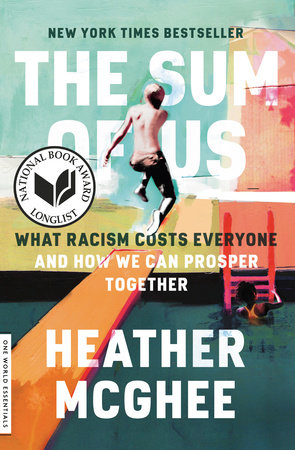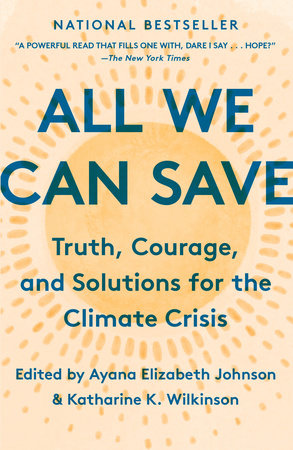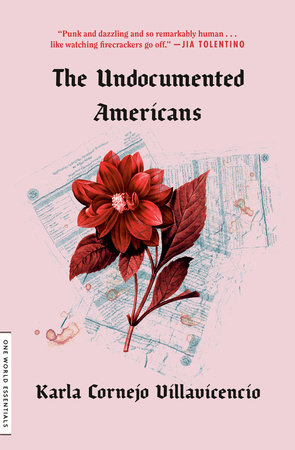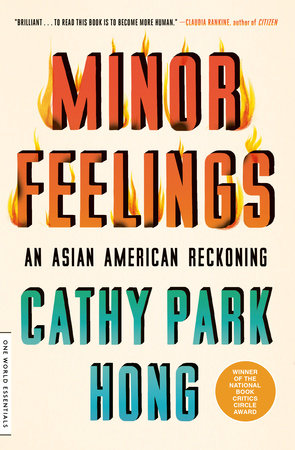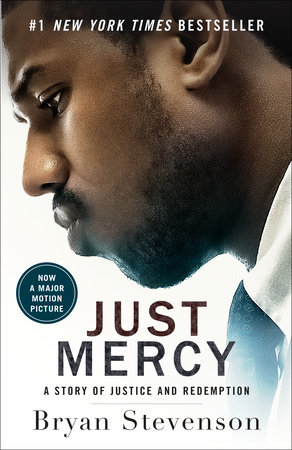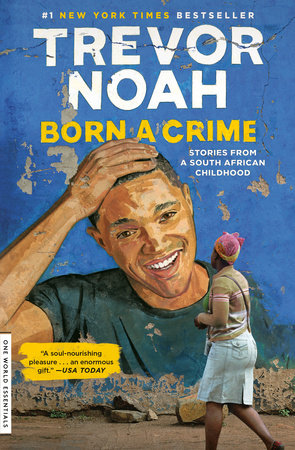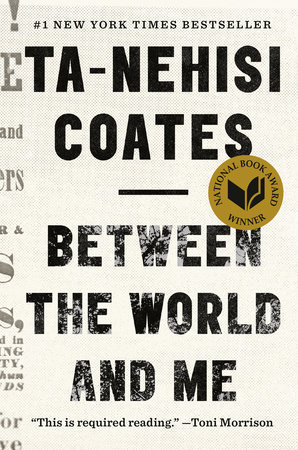Excerpt
How to Be an Antiracist
MY RACIST INTRODUCTION
I despised suits and ties. For seventeen years I had been surrounded by suit-wearing, tie-choking, hat-flying church folk. My teenage wardrobe hollered the defiance of a preacher’s kid.
It was January 17, 2000. More than three thousand Black people—with a smattering of White folks—arrived that Monday morning in their Sunday best at the Hylton Memorial Chapel in Northern Virginia. My parents arrived in a state of shock. Their floundering son had somehow made it to the final round of the Prince William County Martin Luther King Jr. oratorical contest.
I didn’t show up with a white collar under a dark suit and matching dark tie like most of my competitors. I sported a racy golden-brown blazer with a slick black shirt and bright color-streaked tie underneath. The hem of my baggy black slacks crested over my creamy boots. I’d already failed the test of respectability before I opened my mouth, but my parents, Carol and Larry, were all smiles nonetheless. They couldn’t remember the last time they saw me wearing a tie and blazer, however loud and crazy.
But it wasn’t just my clothes that didn’t fit the scene. My competitors were academic prodigies. I wasn’t. I carried a GPA lower than 3.0; my SAT score barely cracked 1000. Colleges were recruiting my competitors. I was riding the high of having received surprise admission letters from the two colleges I’d halfheartedly applied to.
A few weeks before, I was on the basketball court with my high school team, warming up for a home game, cycling through layup lines. My father, all six foot three and two hundred pounds of him, emerged from my high school gym’s entrance. He slowly walked onto the basketball court, flailing his long arms to get my attention—and embarrassing me before what we could call the “White judge.”
Classic Dad. He couldn’t care less what judgmental White people thought about him. He rarely if ever put on a happy mask, faked a calmer voice, hid his opinion, or avoided making a scene. I loved and hated my father for living on his own terms in a world that usually denies Black people their own terms. It was the sort of defiance that could have gotten him lynched by a mob in a different time and place—or lynched by men in badges today.
I jogged over to him before he could flail his way right into our layup lines. Weirdly giddy, he handed me a brown manila envelope.
“This came for you today.”
He motioned me to open the envelope, right there at half-court as the White students and teachers looked on.
I pulled out the letter and read it: I had been admitted to Hampton University in southern Virginia. My immediate shock exploded into unspeakable happiness. I embraced Dad and exhaled. Tears mixed with warm-up sweat on my face. The judging White eyes around us faded.
I thought I was stupid, too dumb for college. Of course, intelligence is as subjective as beauty. But I kept using “objective” standards, like test scores and report cards, to judge myself. No wonder I sent out only two college applications: one to Hampton and the other to the institution I ended up attending, Florida A&M University. Fewer applications meant less rejection—and I fully expected those two historically Black universities to reject me. Why would any university want an idiot on their campus who can’t understand Shakespeare? It never occurred to me that maybe I wasn’t really trying to understand Shakespeare and that’s why I dropped out of my English II International Baccalaureate class during my senior year. Then again, I did not read much of anything in those years.
Maybe if I’d read history then, I’d have learned about the historical significance of the new town my family had moved to from New York City in 1997. I would have learned about all those Confederate memorials surrounding me in Manassas, Virginia, like Robert E. Lee’s dead army. I would have learned why so many tourists trek to Manassas National Battlefield Park to relive the glory of the Confederate victories at the Battles of Bull Run during the Civil War. It was there that General Thomas J. Jackson acquired his nickname, “Stonewall,” for his stubborn defense of the Confederacy. Northern Virginians kept the stonewall intact after all these years. Did anyone notice the irony that at this Martin Luther King Jr. oratorical contest, my free Black life represented Stonewall Jackson High School?
The delightful event organizers from Delta Sigma Theta sorority, the proud dignitaries, and the competitors were all seated on the pulpit. (The group was too large to say we were seated in the pulpit.) The audience sat in rows that curved around the long, arched pulpit, giving room for speakers to pace to the far sides of the chapel while delivering their talks; five stairs also allowed us to descend into the crowd if we wanted.
The middle schoolers had given their surprisingly mature speeches. The exhilarating children’s choir had sung behind us. The audience sat back down and went silent in anticipation of the three high school orators.
I went first, finally approaching the climax of an experience that had already changed my life. From winning my high school competition months before to winning “best before the judges” at a countywide competition weeks before—I felt a special rainstorm of academic confidence. If I came out of the experience dripping with confidence for college, then I’d entered from a high school drought. Even now I wonder if it was my poor sense of self that first generated my poor sense of my people. Or was it my poor sense of my people that inflamed a poor sense of myself? Like the famous question about the chicken and the egg, the answer is less important than the cycle it describes. Racist ideas make people of color think less of themselves, which makes them more vulnerable to racist ideas. Racist ideas make White people think more of themselves, which further attracts them to racist ideas.
I thought I was a subpar student and was bombarded by messages—from Black people, White people, the media—that told me that the reason was rooted in my race . . . which made me more discouraged and less motivated as a student . . . which only further reinforced for me the racist idea that Black people just weren’t very studious . . . which made me feel even more despair or indifference . . . and on it went. At no point was this cycle interrupted by a deeper analysis of my own specific circumstances and shortcomings or a critical look at the ideas of the society that judged me—instead, the cycle hardened the racist ideas inside me until I was ready to preach them to others.
I remember the MLK competition so fondly. But when I recall the racist speech I gave, I flush with shame.
“What would be Dr. King’s message for the millennium? Let’s visualize an angry seventy-one-year-old Dr. King . . .” And I began my remix of King’s “I Have a Dream” speech.
It was joyous, I started, our emancipation from enslavement. But “now, one hundred thirty-five years later, the Negro is still not free.”
I was already thundering, my tone angry, more Malcolm than Martin.
“Our youth’s minds are still in captivity!”
I did not say our youth’s minds are in captivity of racist ideas, as I would say now.
“They think it’s okay to be those who are most feared in our society!” I said, as if it was their fault they were so feared.
“They think it’s okay not to think!” I charged, raising the classic racist idea that Black youth don’t value education as much as their non-Black counterparts. No one seemed to care that this well-traveled idea had flown on anecdotes but had never been grounded in proof.
Still, the crowd encouraged me with their applause. I kept shooting out unproven and disproven racist ideas about all the things wrong with Black youth—ironically, on the day when all the things right about Black youth were on display.
I started pacing wildly back and forth on the runway for the pulpit, gaining momentum.
“They think it’s okay to climb the high tree of pregnancy!” Applause.
“They think it’s okay to confine their dreams to sports and music!” Applause.
Had I forgotten that I—not “Black youth”—was the one who had confined his dreams to sports? And I was calling Black youth “they”? Who on earth did I think I was? Apparently, my placement on that illustrious stage had lifted me out of the realm of ordinary—and thus inferior—Black youngsters and into the realm of the rare and extraordinary.
In my applause-stoked flights of oratory, I didn’t realize that to say something is wrong about a racial group is to say something is inferior about that racial group. I did not realize that to say something is inferior about a racial group is to say a racist idea. I thought I was serving my people, when in fact I was serving up racist ideas about my people to my people. The Black judge seemed to be eating it up and clapping me on my back for more. I kept giving more.
“Their minds are being held captive, and our adults’ minds are right there beside them,” I said, motioning to the floor. “Because they somehow think that the cultural revolution that began on the day of my dream’s birth is over.
“How can it be over when many times we are unsuccessful because we lack intestinal fortitude?” Applause.
“How can it be over when our kids leave their houses not knowing how to make themselves, only knowing how to not make themselves?” Applause.
“How can it be over if all of this is happening in our community?” I asked, lowering my voice. “So I say to you, my friends, that even though this cultural revolution may never be over, I still have a dream . . .”
I still have a nightmare—the memory of this speech whenever I muster the courage to recall it anew. It is hard for me to believe I finished high school in the year 2000 touting so many racist ideas. A racist culture had handed me the ammunition to shoot Black people, to shoot myself, and I took and used it. Internalized racism is the real Black on Black crime.
I was a dupe, a chump who saw the ongoing struggles of Black people on MLK Day 2000 and decided that Black people themselves were the problem. This is the consistent function of racist ideas—and of any kind of bigotry more broadly: to manipulate us into seeing people as the problem, instead of the policies that ensnare them.
The language used by the forty-fifth president of the United States offers a clear example of how this sort of racist language and thinking works. Long before he became president, Donald Trump liked to say, “Laziness is a trait in Blacks.” When he decided to run for president, his plan for making America great again: defaming Latinx immigrants as mostly criminals and rapists and demanding billions for a border wall to block them. He promised “a total and complete shutdown of Muslims entering the United States.” Once he became president, he routinely called his Black critics “stupid.” He claimed immigrants from Haiti “all have AIDS,” while praising White supremacists as “very fine people” in the summer of 2017.
Through it all, whenever someone pointed out the obvious, Trump responded with variations on a familiar refrain: “No, no. I’m not a racist. I’m the least racist person that you have ever interviewed,” that “you’ve ever met,” that “you’ve ever encountered.” Trump’s behavior may be exceptional, but his denials are normal. When racist ideas resound, denials that those ideas are racist typically follow.
When racist policies resound, denials that those policies are racist also follow.
Denial is the heartbeat of racism, beating across ideologies, races, and nations. It is beating within us. Many of us who strongly call out Trump’s racist ideas will strongly deny our own. How often do we become reflexively defensive when someone calls something we’ve done or said racist? How many of us would agree with this statement: “‘Racist’ isn’t a descriptive word. It’s a pejorative word. It is the equivalent of saying, ‘I don’t like you.’” These are actually the words of White supremacist Richard Spencer, who, like Trump, identifies as “not racist.” How many of us who despise the Trumps and White supremacists of the world share their self-definition of “not racist”?
What’s the problem with being “not racist”? It is a claim that signifies neutrality: “I am not a racist, but neither am I aggressively against racism.” But there is no neutrality in the racism struggle. The opposite of “racist” isn’t “not racist.” It is “antiracist.” What’s the difference? One endorses either the idea of a racial hierarchy as a racist, or racial equality as an antiracist. One either believes problems are rooted in groups of people, as a racist, or locates the roots of problems in power and policies, as an antiracist. One either allows racial inequities to persevere, as a racist, or confronts racial inequities, as an antiracist. There is no in-between safe space of “not racist.” The claim of “not racist” neutrality is a mask for racism. This may seem harsh, but it’s important at the outset that we apply one of the core principles of antiracism, which is to return the word “racist” itself back to its proper usage. “Racist” is not—as Richard Spencer argues—a pejorative. It is not the worst word in the English language; it is not the equivalent of a slur. It is descriptive, and the only way to undo racism is to consistently identify and describe it—and then dismantle it. The attempt to turn this usefully descriptive term into an almost unusable slur is, of course, designed to do the opposite: to freeze us into inaction.
The common idea of claiming “color blindness” is akin to the notion of being “not racist”—as with the “not racist,” the color-blind individual, by ostensibly failing to see race, fails to see racism and falls into racist passivity. The language of color blindness—like the language of “not racist”—is a mask to hide racism. “Our Constitution is color-blind,” U.S. Supreme Court Justice John Harlan proclaimed in his dissent to Plessy v. Ferguson, the case that legalized Jim Crow segregation in 1896. “The white race deems itself to be the dominant race in this country,” Justice Harlan went on. “I doubt not, it will continue to be for all time, if it remains true to its great heritage.” A color-blind Constitution for a White-supremacist America.
The good news is that racist and antiracist are not fixed identities. We can be a racist one minute and an antiracist the next. What we say about race, what we do about race, in each moment, determines what—not who—we are.
I used to be racist most of the time. I am changing. I am no longer identifying with racists by claiming to be “not racist.” I am no longer speaking through the mask of racial neutrality. I am no longer manipulated by racist ideas to see racial groups as problems. I no longer believe a Black person cannot be racist. I am no longer policing my every action around an imagined White or Black judge, trying to convince White people of my equal humanity, trying to convince Black people I am representing the race well. I no longer care about how the actions of other Black individuals reflect on me, since none of us are race representatives, nor is any individual responsible for someone else’s racist ideas. And I’ve come to see that the movement from racist to antiracist is always ongoing—it requires understanding and snubbing racism based on biology, ethnicity, body, culture, behavior, color, space, and class. And beyond that, it means standing ready to fight at racism’s intersections with other bigotries.
This book is ultimately about the basic struggle we’re all in, the struggle to be fully human and to see that others are fully human. I share my own journey of being raised in the dueling racial consciousness of the Reagan-era Black middle class, then right-turning onto the ten-lane highway of anti-Black racism—a highway mysteriously free of police and free on gas—and veering off onto the two-lane highway of anti-White racism, where gas is rare and police are everywhere, before finding and turning down the unlit dirt road of antiracism.
After taking this grueling journey to the dirt road of antiracism, humanity can come upon the clearing of a potential future: an antiracist world in all its imperfect beauty. It can become real if we focus on power instead of people, if we focus on changing policy instead of groups of people. It’s possible if we overcome our cynicism about the permanence of racism.
We know how to be racist. We know how to pretend to be not racist. Now let’s know how to be antiracist.




